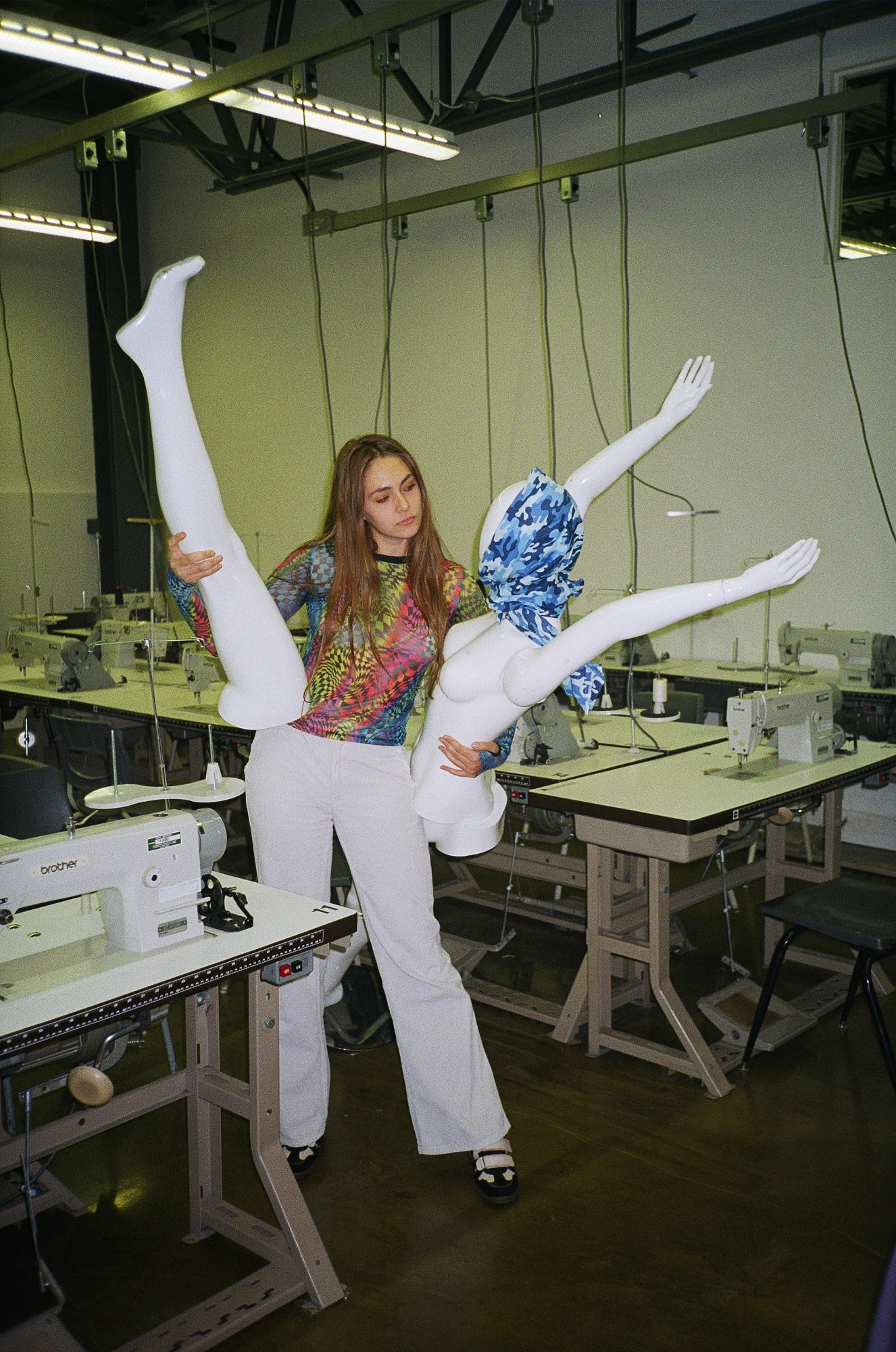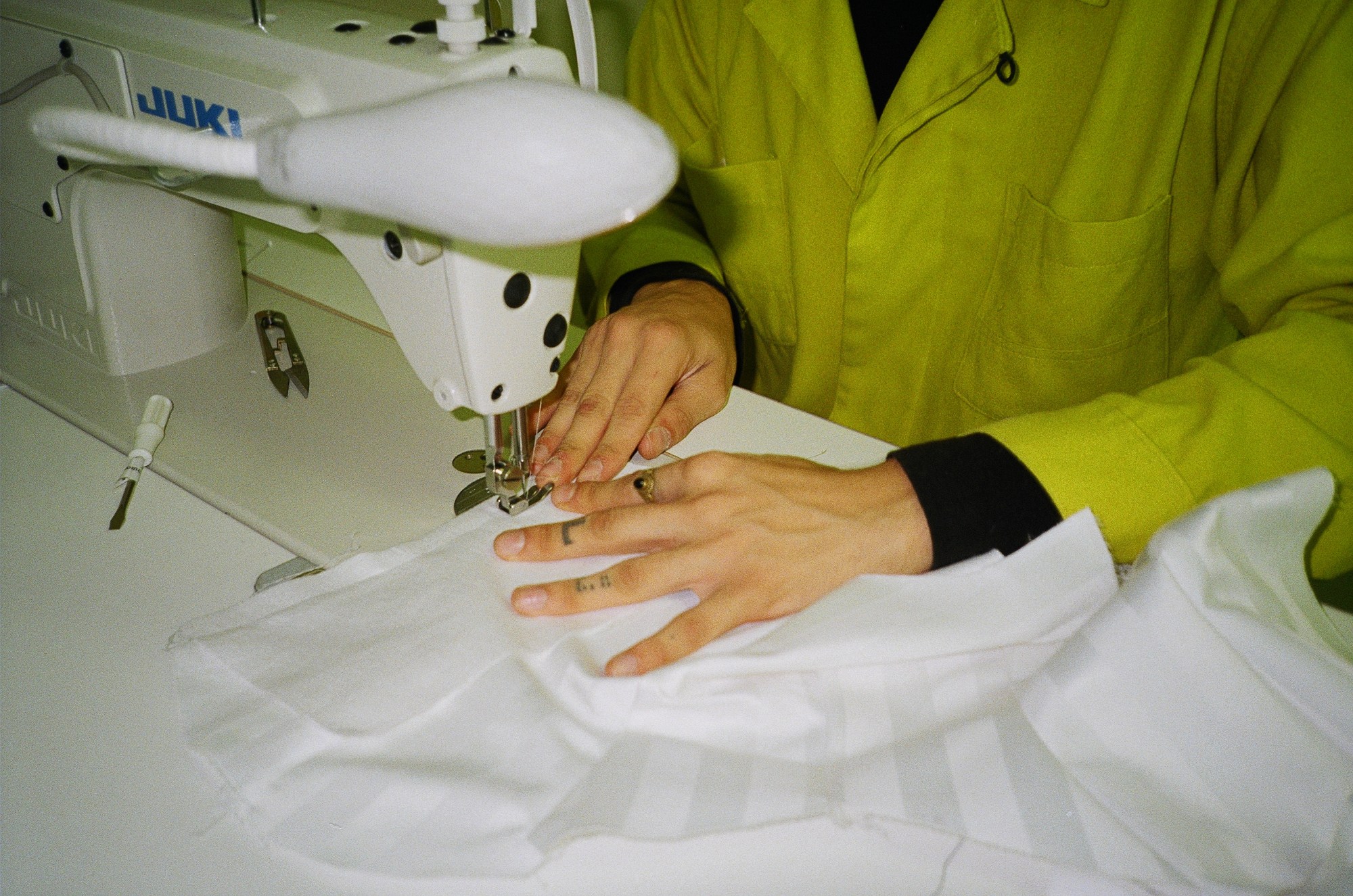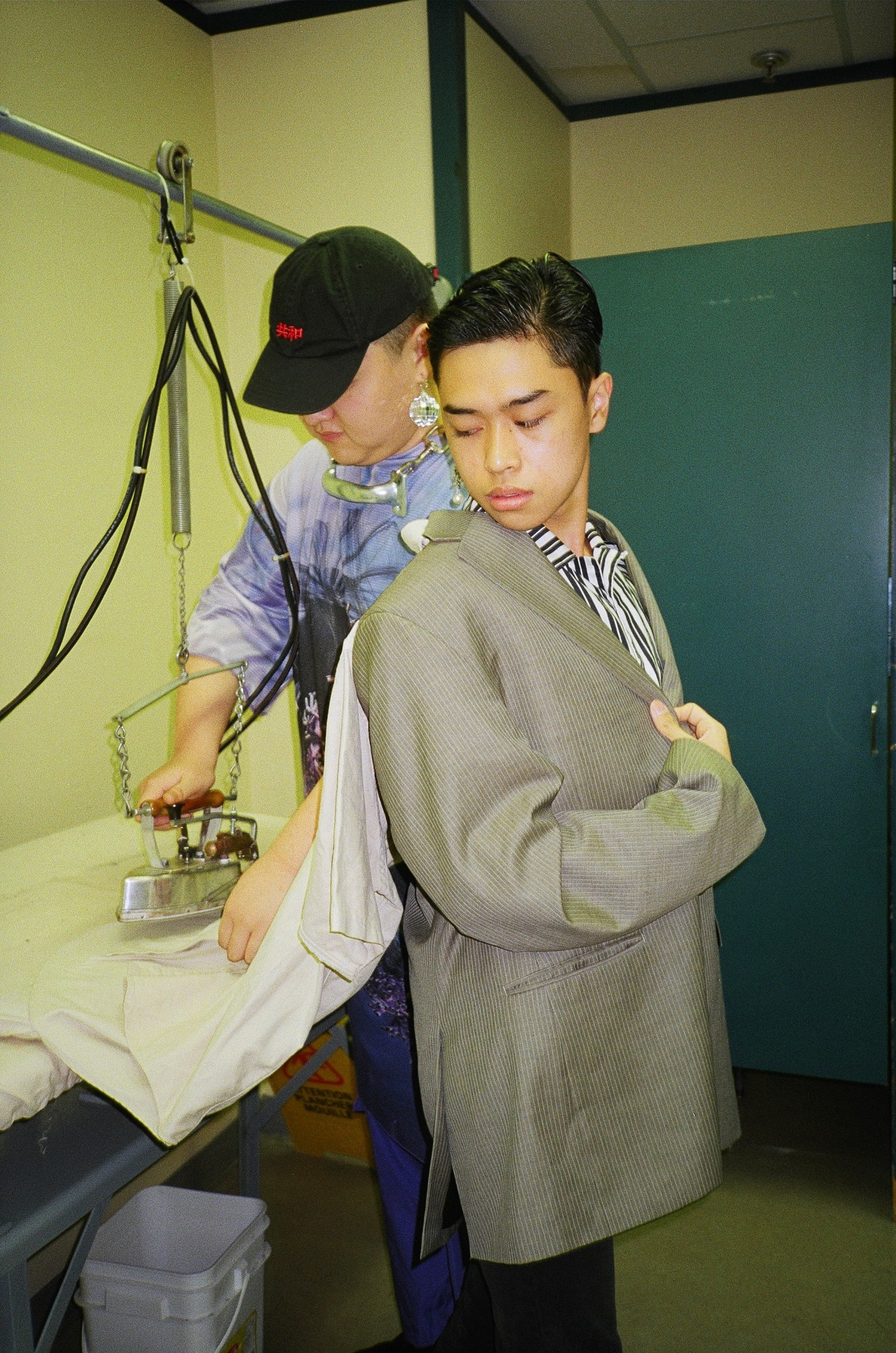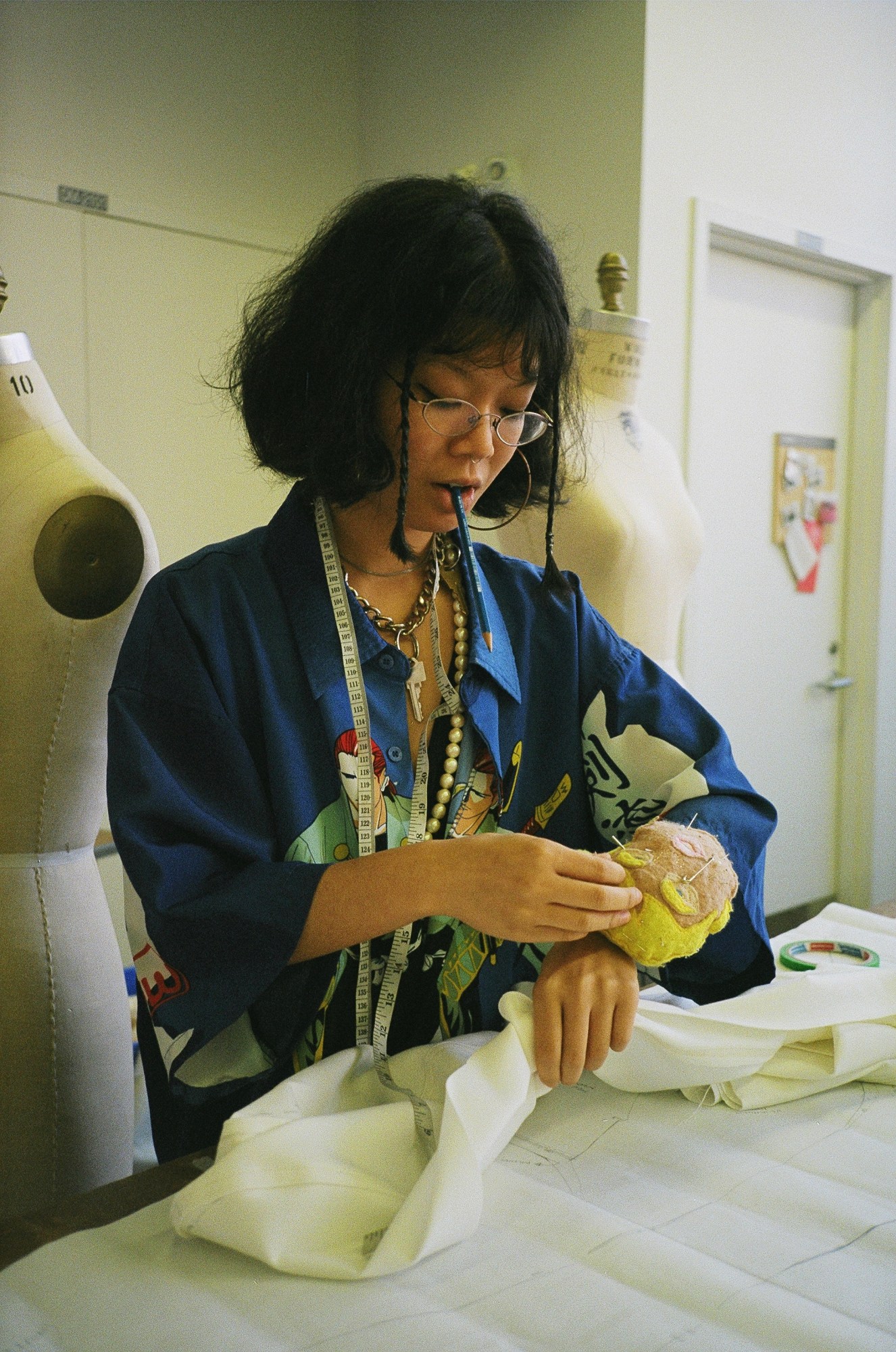Is a fashion degree worth the money in 2018? As a new wave of students enrol and apply to colleges, i-D and 1 Granary take a closer look at fashion education and beyond, to better understand how to make it in one of the toughest industries to crack.
Though fashion has long been an industry with global reach, it’s no secret that it has, for both historical and simple logistical reasons, been centred in a handful of cities — New York, London, Paris, Milan: The Big Four. Home to houses, manufacturers, large-scale buyers and the lion’s share of the world’s leading schools, their monopoly-holder statuses are woven into their very infrastructures.
But, as fashion opens up to the rest of the world, and the rest of the world opens up to it, new micro-capitals are springing up like daisies. A positive development, for sure. But, in an industry infamous for its fickle nature, what steps need to be taken to ensure they’ll continue thrive beyond their initial five minutes of fame? Across three cities, Montreal, Berlin and Kyiv, I spoke with the designers and educators eager to see their cities excel: the thing uniting them? A steadfast belief in the potential of education to make it happen.
Did you know that more people call the Island of Montreal home than do Manhattan? Just over two million live on this rough triangle floating on the St Lawrence river — the heart of Canada’s second city — dwarfing the 1.67 million or so NYC’s core. And yet, Montreal and its cultural clout have for too long been overlooked in favour of that of its sister to the south. But the tides may just be changing.
Though better known for its music scene, fashion is quickly becoming the creative industry making the city known on the world’s stage. Take a quick scan through your ‘following’ lists and you might be surprised at just how many on there are from, some still residing in, Montreal. Its understated heavyweight classification is backed up when you look back on the designers to have emerged from its scene over the last decade: in 2013, Rad Hourani presented the first explicitly unisex collection in the history of Paris’ Couture Week; in 2014, Thomas Tait won the inaugural LVMH prize, while 2016 saw the competition’s Special Prize picked up by a then 19-year-old Vejas Kruszewski. Today, Fecal Matter, Lecavalier, St-Henri, even Fashion East presentees Charlotte Knowles, are all brands with strong ties to the city.
With such an illustrious roll-call, why is it that Montreal’s star has yet to fully rise? “Quebec sees fashion as more of a product than as something more sensitive,” designer Marie-Ève Lecavalier tells me. She’s just made her homecoming to Montreal following a five year wander through New York, Geneva and Antwerp, working at Alexander Wang, Rad Hourani and Raf Simons. And then there was her winning of the Chloé prize at this year’s Hyères festival for her psychedelia-suffused collection of wearable, Philophile-friendly luxe. “We have a great education here when it comes to more technical aspects, finishing and precision for example, but when it comes to a concept or research driven approach, it just isn’t taught. We’re trained for the industry that’s been here in Quebec for some time now. There’s a strong industrial focus,” she says, contemplating her experience at the École supérieure de mode de l’ESG UQAM (ESM), one of Montreal’s two leading fashion learning institutions.
According to mmode, fashion contributes an estimated $8 billion (CA) to Quebec’s economy — no figure to balk at. What’s more, with 48% of the country’s fashion manufacturing situated in the province, and Montreal at its heart, the city is the third largest fashion manufacturing centre in North America behind New York and LA: there is an industry there, a big industry at that. So it’s understandable, in part at least, that it’d be in the local fashion schools’ interests to follow suit. But it leaves little for those whose aims lie beyond T-shirt titan Gildan, better known as the suppliers of Kanye’s The Life of Pablo merch and the recent acquirers of American Apparel. Where should those students go?

With a proud reputation for educating no small number of first-rate designers, perhaps most notably Thomas Tait, Collège LaSalle would probably be the outsider’s first guess. You wouldn’t be wrong, but you wouldn’t be right: just like ESM, “it’s very technically driven, you get graded on notches and measurements in your pattern classes and on body proportions in your drawing classes”, says Alexandre Arsenault, CSM MA alum and one half of one of London’s hottest-tipped brands, Charlotte Knowles (the other, of course, being Charlotte herself). In fact, such is the focus of LaSalle’s schooling on the mastery of sheer technical skill that classes, for the first two years at least, focus exclusively on one aspect of the garment-making process after another, not being brought together until the final year. It hardly sounds like the most creatively inspiring method of learning, as Alexandre confirms: “They take the subjectivity out of everything really, or at least they did when I was there.”
There is, of course, much to be gained from such a thorough schooling in the fundamentals of clothes-making: “I could never have made my brand if it wasn’t for LaSalle’s teaching,” affirms Jean-Loup Leblanc-Roy, creative director of St-Henri, the upstart menswear label based one-third in London, two-thirds in Montreal. It was only after studying, and later working, in London that he realised just how crucial the school’s fastidiously technical approach is in the achievement of its goal to produce universally competent designers. “I was actually shocked when I moved here and studied at LCF: people didn’t know the things that I’d learned at LaSalle, things that are so basic. Interning at different brands, working with students from different schools all over London, I quickly realised that many students here lack technical skills, and that students coming from more technically-oriented schools are the minority here in London.” Something that, in a city that basically charges its population to breathe its soot-sodden air, only drives already-exorbitant costs for young designers: “If you want to start your own brand, and you’re on a low budget, it’s important to be able to make everything yourself, to be able to finish a pair of pants, or whatever it is.”
Nirvana for the technically minded it may seem, but you’ll probably have noticed the emergence of a pattern — every designer I spoke to left the city to pursue further education abroad, all plumping for schools with strong reputations for more creative curricula — it’s not gone unnoticed by the faculties. Speaking with Milan Tanedjikov, a lecturer at both ESM and LaSalle, and creative director of the latter’s course, he echoes what his old students had to say, that “the students coming out of Montreal are really good on the technical front, I would even say they’re superior to CSM graduate students. But the negative side is that many students’ aim is to leave Montreal to see something more, like Marie-Ève at HEAD or Alexandre at CSM.”
Montrealer fashion students seeking anything beyond a bachelor degree have no choice but to leave the city due to the total absence of an MA programme. “Here in Canada, programs are [governed by the] provincial Ministry of Education,” explains Milan. “Every school has to agree to every change, which slows the process drastically. It’s not that people haven’t tried to open an MA program, but it’s been extremely difficult; there are so many players that have their doubts [in creative education].” Consequently, students, often with the financial backing of the Fondation de la Mode de Montréal, leave for the brighter lights of bigger cities, seldom to return.

Recent years have, however, seen a turn in the city’s fate. Spurred on by seismic shifts in the city’s fashion topography, a viable local infrastructure for high-end fashion is slowly but surely emerging. SSENSE, long a keystone of the scene, has, over the last few years, evolved from a respected ecommerce platform into a veritable multi-platform cultural behemoth: 2015 saw the hiring of 032c’s Joerg Koch as the website’s first editor-in-chief, a subsequent interface overhaul and an eclectic spread of content — interviews with the likes of Kelsey Lu and Hanif Abdurraqib; market research pieces on the Triple S sneaker and Issey Miyake’s Bao Bao bag, shot through with irreverent quirk. Then, this May, a long-laboured-over five-storey flagship in cobbled Vieux-Montreal opened its doors to great fanfare, with the industry’s who’s who shipped in for the Arca-headlined launch. In the few short months that have since passed, the stream of designers taking over the store has only flowed faster, with Charles Jeffrey, Virgil Abloh and Craig Green all passing by for visits highly publicised by both SSENSE and the respective brands, extending the reach of the store, and Montreal by proxy, to a collective following that figures in the millions.
Cause for optimism? Certainly. “I think they are extremely important, they could be what brings fashion to Montreal, they are definitely what turns the international eyes our way,” says Alexandre, with Milan adding that “everyone cheering for high fashion in Montreal is really hopeful that SSENSE will be the player that helps younger brands make it. There are three empty floors that constantly need be filled with events and installations, which provides a platform for local designers: it’s not really viable to constantly be bringing people from around the world. It’s the most positive thing to happen to Montreal in the past two years.” The positive thinking is only fuelled by SSENSE’s swiftly cultivated reputation for catalysing a brand’s global success. An early champion of labels like 1017 ALYX 9SM and Off-White, their seal of approval is now being handed out to local brands, Jean-Loup’s St-Henri among them.
The investment of this new-born behemoth in its immediate ecosystem has issued a new pulse of activity, helped in no small part by its bellwether status: “They start giving orders to these young designers, and, since SSENSE is a generational leader, the young designers then start to receive orders from other outlets. We’ve then seen the emergence of a small high-end manufacturing business, with players like White Walls WorldWide, for example.”

The lagging element in Montreal becoming a smooth-running, self-sustaining machine, then, is the education system. But just as the education system has, in the past, shifted to accommodate the wants of the city’s predominantly industrial fashion economy, there’s quiet hope that it will, in turn, come to reflect the wants and needs of the city’s burgeoning creative high-end. “The responsibility to always adapt and try to cater to what’s happening in the macro-industry lies with the schools, and the schools here should try to adapt a little bit faster,” says Milan, going on to suggest the possibility of a two-tiered system that he believes would satisfy all parties’ appetites. “The main thing that could be done is to operate on a two-speed level. There’d be a general level, for those that aren’t really interested in becoming the next Thomas Tait, but we should have an elite step for students that are, so that they can stay here in Montreal. If we want new fashion businesses here, change needs to take place at the level of education.”
An intriguing correlation that emerged across the conversations I had in all three of the cities that feature across this series was the repeated citing of Belgium, specifically Antwerp, as a sort of model of comparison or aspiration. In Montreal’s case, there are certainly parallels: just as Belgium is but a stone’s throw from London and Paris, Montreal is from New York. Belgium is home to two major fashion schools, La Cambre and Antwerp’s Royal Academy, whose reputations ESM and LaSalle are looking, in the long run, to match. And like Brussels and Antwerp, which, compared to other European fashion hubs, are considerably cheaper, the monthly cost of a spacious atelier in Montreal can clock in as low as $300 (CA).
Plausible as these infrastructural points of comparison may be, don’t you think Montreal could do even better? The city’s designers think so, as Marie-Ève Lecavalier tells me: “I’ve been in Antwerp for the past six months — Montreal is way more fun, it has way more to offer its creatives. I’m impressed that people in Antwerp are able to leave the Academy and do something creative in a city that, actually, is super conservative. If they can make it, then why can’t Montreal? It has a lot to offer, people just need to have the balls to do something, they need to be pushed.”
